Attorneys anticipate judge’s historic ruling in 41-year-old land rights case

SAN LUIS, Colo. — One of the longest-running court cases in the nation has reached a pivotal moment.
Forty-one years have passed since southern Costilla County’s historic land rights discrepancy Lobato v. Taylor was filed. The class action lawsuit called for reinstatement of traditional land rights after the privatization of common lands within a former Mexican land grant. Twenty years ago, the Colorado Supreme Court reinstated the rights to graze livestock, and to collect firewood and timber.
Now, for the first time, a judge is defining how those rights may be carried out — and overseen.
Following a late September hearing centered around tense verbal and material disagreements between defendants Cielo Vista Ranch and the plaintiffs, who are rights holders, over details of ranch access, Senior Judge Kenneth M. Plotz implored both sides to come to an agreement — or he would decide.
Through a collective agreement, “I would hope that both parties agree on the guidelines so that this case does not have to go on in perpetuity,” Plotz said. If the two sides could not agree on rules to govern rights, “I’ll have to impose my own, and then we’ll go on,” the judge said.
Counsel spent four months with clients — and each other — drafting regulations to govern the once-communal mountain tract. On January 28, attorneys filed briefs and proposed stipulations totaling dozens of pages. The documents outline how each side would like to manage historic rights and suggest consequences for land abuses.
Both parties will turn to the judge’s rules to remove ambiguity.
Guidelines to be clarified include the number of livestock allowed to graze on the mountain, types of trees available to harvest for timber, and types of firewood available to gather. How stipulations will be enforced is a top concern.
With a career in conflict resolution and mediation, Judge Plotz is now tasked with synthesizing the two proposals into a unified document that works for everyone. The court cannot comment on how long this process will take.
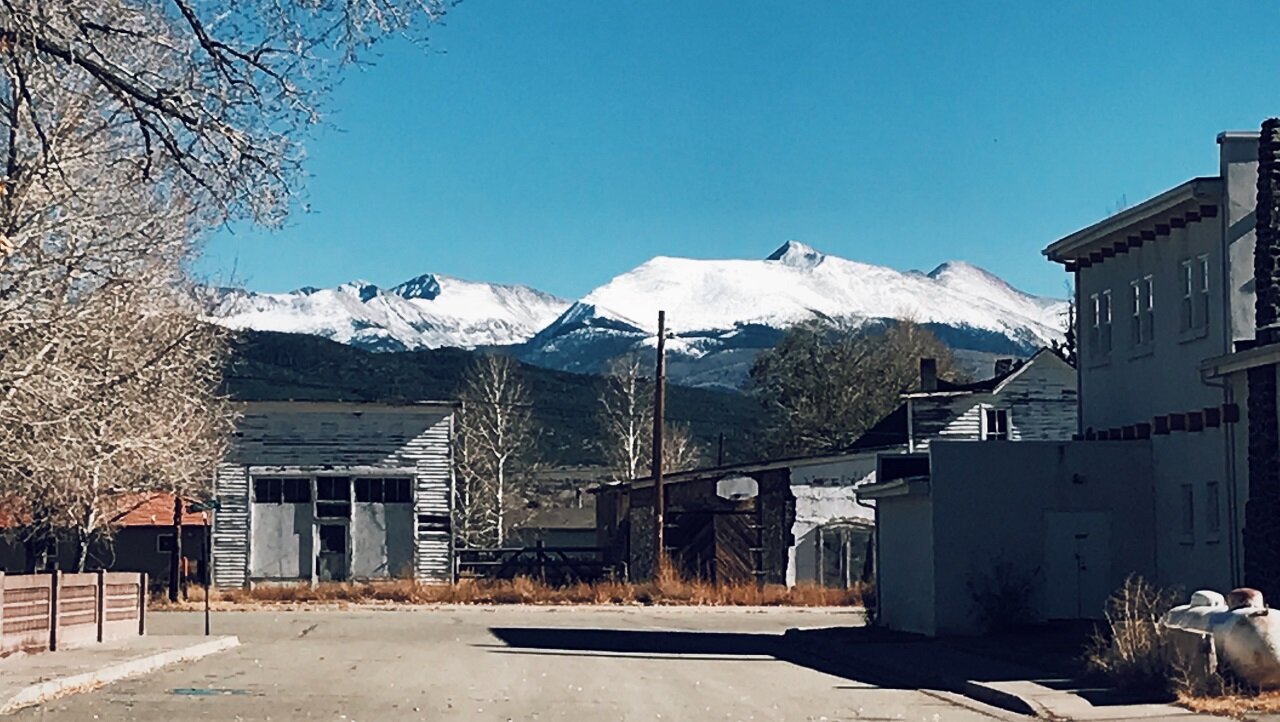
One-of-a-kind
A prescriptive easement on private property that honors traditional land rights carried over from Mexican law is not exactly typical.
In fact, it’s an anomaly it even happened at all.
Attorneys on both sides of Lobato vs. Taylor acknowledge that reclamation of these rights is novel within the relative certainty of private property protections, seen as a founding principle of the nation.
“I don’t know that a set of facts like this exists anywhere else in the United States of America,” said Andrew Valenica, attorney with Ballard Spahr. The firm has represented plaintiffs pro bono for two years. “The case is very rare, and very unique,” he added.
“It’s, if not the only, one of the only cases in the country like this,” agreed his colleague, attorney for the plaintiffs Sarah Wallace.
While “nearly every private property owner has easements on their property, this is a very different situation,” said Jamie Cotter, partner at Spencer Fane and attorney for defendant Cielo Vista Ranch and ranch owner William Harrison. “I don't know of another case where you have a private property owner legitimately and indisputably owning property to which so many people have access. And in the ways that they have access — there's just nothing like it.”
In September 2021, after two days of court proceedings and over 12 hours of testimony, Honorable Senior Judge Kenneth M. Plotz found that Cielo Vista Ranch may not restrict access to community members with historic rights to graze livestock and utilize tree resources on once-communal lands in Costilla County. Judge Plotz called for a co-management plan, saying he would determine rules if both sides could not come to agreement.
The uniqueness in case law derives from a uniqueness in circumstance.
In a not-so-distant past, Indigenous tribes of what is now south-central Colorado were warred, restricted and removed to make way for settlement in a region claimed by over time France, Spain, Texas and Mexico. In 1848, following the Mexican-American War, the Treaty of Guadalupe Hidalgo relinquished the area to the United States. Colorado Territory formed in 1861, finally achieving statehood in 1876.
One of the first permanent settlements, San Luis de la Culebra, was founded in 1851 during an ambiguous window of time: post-Treaty, yet pre-Territory. Spanish, Mexican and Indigenous settlers homesteaded under the orchestration of French-Canadian deed-holder Charles Beaubien, a fur trader who became a Mexican citizen in order to make land claims.
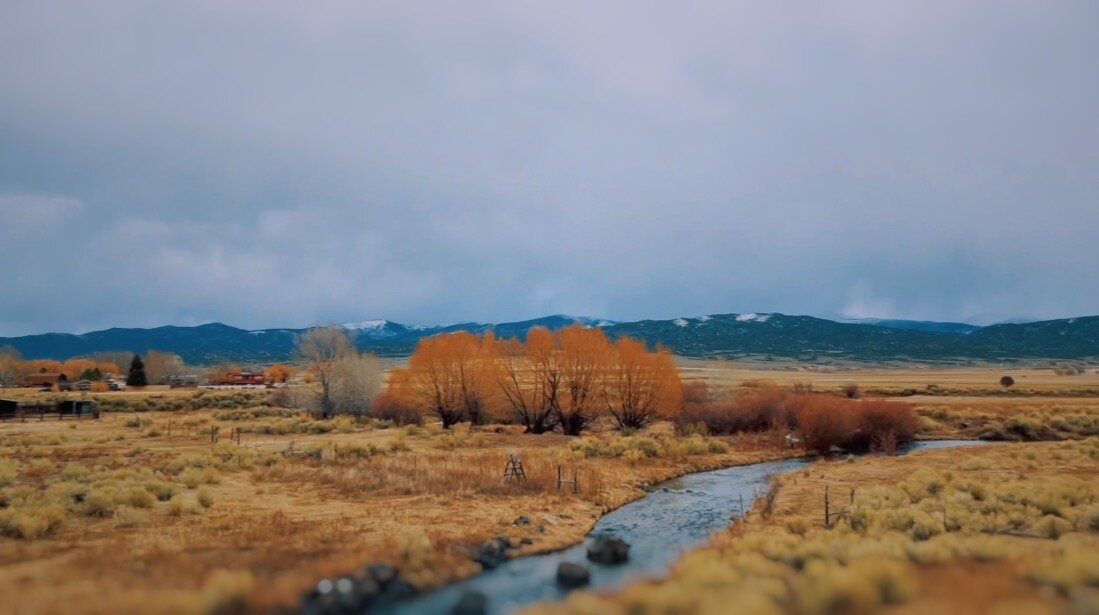
Following Mexican law, the settled lands were set out in long lots called varas with equal access to acequia waters. A subsistence lifestyle continued, with settlers drawing resources from the mountain as promised in deeds by Beaubien.
In 1860, the U.S. Congress confirmed Beaubien’s land grant. This was rare — it was one of the first and only land grants in Colorado to be honored in whole. The area included at least two million acres in the south San Luis Valley.
Three years later, William Gilpin, the first territorial governor of Colorado, took privatization of the Sangre de Cristo Land Grant into his own name. He formed an estate company with plans to subdivide the land.
Though he died before the property officially transferred to Gilpin, Beaubien included continued settlers’ rights to the mountain in his deed. Without this access, he recognized, survival would be difficult in the high altitude, desert landscape. The “benefits of pastures, water, firewood and timber” were noted in Beaubien’s document, along with a simple, overarching rule: “always taking care that one does not injure another.”
Unknowingly at the time, this variation on the Golden Rule was to be the only guidance on how to manage the mountain rights the community received for 159 years — until now.
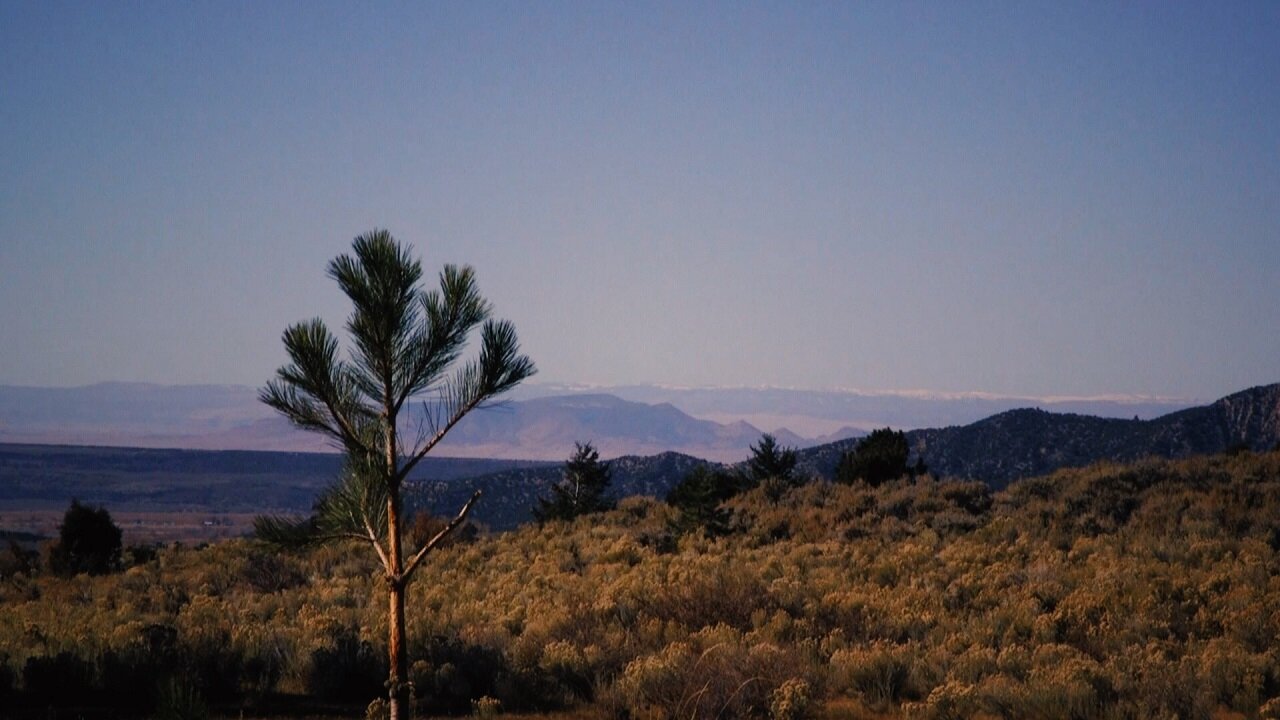
Even back then, a history of local settlement rights did not exactly jibe with private land speculation. After acknowledging locals’ right to access the mountain upon purchase, Gilpin then tried to negotiate the rights. Research documents show that in 1863, attempts to reach settlement between Gilpin and local rights holders “fell apart because the parties could not agree on whether the parciantes would be allowed to graze livestock and cut timber on unoccupied lands.”
Common rights to the mountain went uninterrupted for 100 years until its 1960 sale to Jack Taylor, who is known for placing a fence around the property and beginning a logging operation among the headwaters of the Río Culebra watershed.
From 1961 on, a litany of lawsuits were filed on both sides for land rights infractions. In 1981, Attorney Jeff Goldstein filed a class action lawsuit against Taylor on behalf of plaintiffs and the Land Rights Council in 1981 to regain traditional rights.
Over the next two decades, Goldstein and a large team of lawyers worked pro-bono to take the case through dozens of district, appellate and trial courts. Each court denied the rights.
Multiple federal agencies and lawmakers intervened to try to support a resolution, at times attempting to purchase the mountain as public lands.
In 2002, the Colorado Supreme Court made a stunning reversal of its previous decision to deny rights. Dusting off the Beaubien document became the herald of the case, with prescriptive use spelled out in grazing and tree resources. In 2005, after a lengthy title identification process, more than 350 landowners who could link their deed back to the time of at least Gilpin received the first keys to the ranch.
Litigation continues to this day. Ranch owners have been in legal proceeding with the community in some form for the entire 62 years since Taylor first installed the fence.
“It’s really one of a kind,” said Valencia, who felt called to work on the case because of his own family’s background in agriculture.
The case is “a unique intersection of the law,” Valencia said. “It’s a historical, more communal way of living, mixed with an individual property owner’s rights, and how those have interplayed over the course of the last century.”
Though she didn’t hear about it as a student at University of Colorado Boulder Law School, Wallace said she has been aware of the case for a long time.
“It’s definitely such a famous case,” Wallace said in an interview with Rocky Mountain PBS. “I was interested primarily due to its unique legal perspective — this very unusual property right.”
Attorney for the defendant Cotter said Lobato v. Taylor “wrote the law” with respect to prescriptive rights. “I don't have an easement case where the Taylor Ranch case isn't cited,” she noted.
Cotter first became aware of the cases in 2007 during law school at University of Denver while working as a summer associate at Grimshaw and Herring. The firm began work on the case in 2004. (Grimshaw and Herring was acquired by Spencer Fane in 2012.) Researching, “I remember just being in awe about the scope and the uniqueness of the case, and the history of it,” Cotter said.
From the perspective of the law, this case is unique “in every way,” said Cotter. “I've lost track of the number of times I've been present and either the parties or Judge Plotz say, ‘This is a unique case,’ as a way of framing whatever the issue is before us. It was the first of its kind. It made law really at every trip up to the Supreme Court. And there's just nothing like it from a factual and a historical standpoint.”
Without points of reference, “there are very few black and white applications of the law to these facts,” Cotter noted. “And I think the history certainly colors the application of the law. History is everything in this case. It just is,” Cotter said.
While she often works with clients entering into agreement over a common goal, Wallace said none of her cases are “as complicated, with this many personalities and complexities,” she said. “[This case] is not really like anything I’ve ever seen.”
After generations of legal process and court decisions, “I really think we’re at a point now where a set of rules and regulations is appropriate,” Valencia said. “There’s enough history now that we can effectively develop rules for both sides.”

The current climate
Between the mountain and the town, the weather has created an interesting storm.
Two decades of undefined access to Cielo Vista Ranch is underscored by the chaos of historic encounters. A storied and often traumatic past includes what has at times been a violent turf war, including brutal beatings, ill relations, even assassination attempts — making the mission to compromise today perhaps more difficult.
In a small town, community relationships impact interactions on the ranch, Wallace said. She noted most ranch employees the hearing displayed as at odds with rights holders are residents with access rights themselves.
“It’s a very, very small community, with lots of history. This whole case is based on a community’s history,” she said. “Familial bonds and generations who have lived here together all factor in.”
Wallace said it was important for the court to understand that “these relationships go a long way back. Some witnesses have known each other since grade school. It explains that some of the heated exchanges we saw were based on years and years of frustration building up — probably on both sides,” she acknowledged. “Both sides testified they have been treated poorly because of their involvement or role on the ranch.”
Elders hold memories of the economic and social impacts of privatization as herds were reduced or eliminated and families outsourced firewood and building materials. Without access, spiritually, a deficit began ticking: less than 1% of land in Costilla County is public.
“There’s a lot of history at the ranch that’s hard to overcome, and I think sometimes it even spans owners,” said Valencia. The ranch has had four owners since 1981, each accepting the case along with the land title. “Each time it transfers hands, you encounter new problems” he said.
Wallace said her impression was also “that things have changed from ranch owner to ranch owner. Some ranch owners have even fought against the premise that these rights exist.”
“I think you could see the climate at the hearing,” said Cotter.
Plaintiffs filed a motion that a “campaign of intimidation and harassment” by ranch staff and “improper restrictions” over managing resource rights were discouraging the community from using their hard-won rights.
In a Catch-22, Cotter noted the climate “I think is made infinitely worse by a pending court case, an open court case, that is now 41 years old. I think that has resulted in a situation of people not being vulnerable and finding common ground, because it can negatively impact their standing in a litigation case — which I understand.”
Some community members don’t want to get involved because history creates it is better to stay out of it, Wallace noted.
For those who do step forward, “They’re the fiery ones,” Wallace said. “Nobody is going to stop some of these folks, at 80 years old, from accessing their rights.”



Documents filed by counsel after an extension on January 28, 2022:
Pursuant to the court’s order of September 28, 2021, counsel conferred with clients and each other to draw up a list of regulations for grazing of livestock and collection of firewood and timber. The goal is to determine how to collectively co-manage the access rights that were granted per Supreme Court decision Lobato v Taylor on what is now Cielo Vista Ranch. “The Ranch is a finite resource that must be protected for future generations,” the agreed-upon document reads.
Exhibit A: Stipulated Principles, definitions, and regulations
This document denotes agreed-upon definitions and regulations between access rights holders of the greater San Luis community and Cielo Vista Ranch.
Exhibit B: Access rights holder’s proposed additional regulations
Because the parties were unable to agree on a full set of regulations, this document contains proposed regulations on behalf of access rights holders of the greater San Luis community. Reference Brief Exhibits A and B for plaintiffs’ explanations of proposed rules, responses to the ranch’s rules, and an extensive reference collection of background articles. This Brief in support of access rights holders’ regulations and response to CVR’s proposed regulations filed by plaintiffs also references their perspective on the historic and cultural considerations of the case.
Exhibit C: Cielo Vista Ranch’s proposed additional regulations
Because the parties were unable to agree on a full set of regulations, this document contains proposed regulations on behalf of Cielo Vista Ranch. Reference this Ranch owner’s authority and arguments re: non-stipulated rules and regulations for the ranch’s explanations on their proposed rules, and responses to the plaintiff’s rules.
Will the case ever end?
After 41 years, “it’s unusual to have a case that doesn’t seem to have an end,” Wallace noted. “Usually you have a trial, somebody wins, and then that’s the end of it.”
Counsel currently differs on whether the case should be closed by the courts — meaning a technical end with a final judgement, unless reopened in appeal.
Forthcoming rules may require further clarification from the courts, making the case inconvenient to close, Wallace said. Instead of a typical easement wherein one party might have an ongoing right to use a path, this easement presents more variables, she said.
Wallace said the Supreme Court’s 2002 decision “was looking forward. Here, [the court] went as far as to say, ‘This case is going to keep going on as long as these rights need to be safeguarded,’” she said, noting that their firm did not have to file a new lawsuit to continue litigating the case last year.
“I think the biggest task once the court enters the rules, is what is the process for addressing grievances related to those rules?” Wallace said. “We would prefer that the case stay open so that it’s not financially made difficult to bring those grievances,” Wallace said.
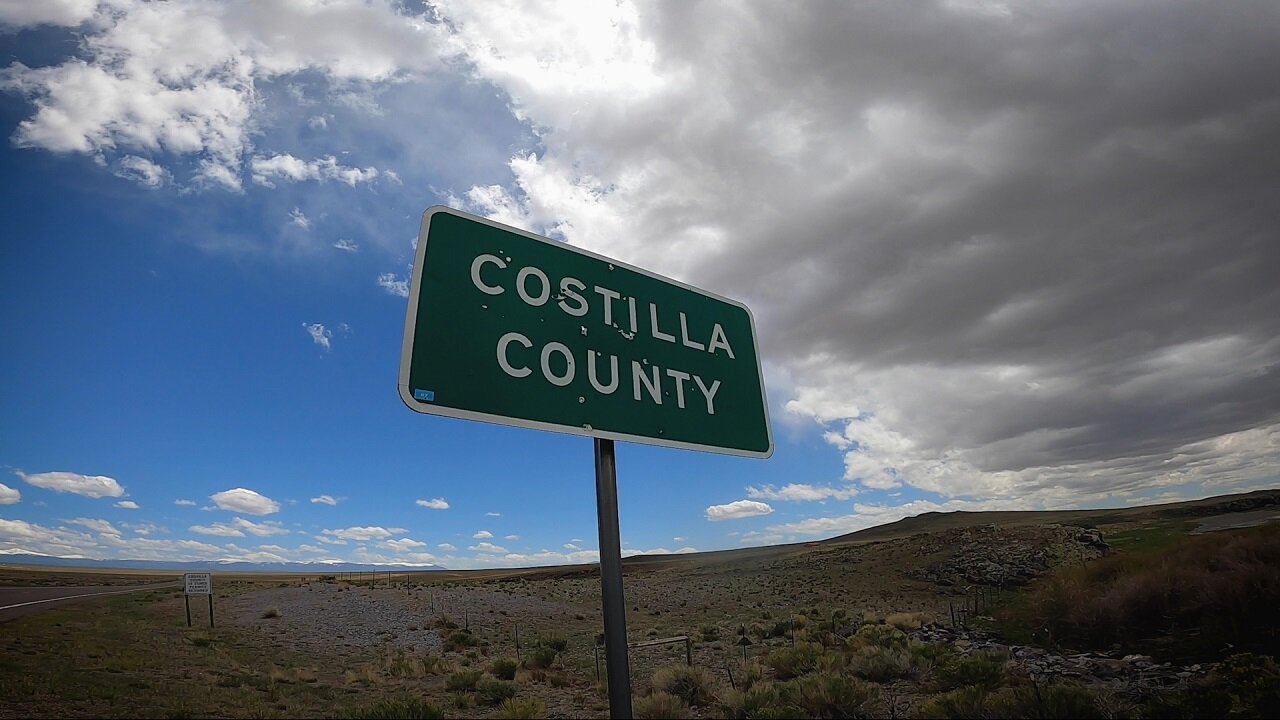
Cotter, representing Cielo Vista Ranch, said, “we've asked that this case be closed.”
When stipulations come into place, Cotter said she could not foresee continuation of the “constant misunderstandings and miscommunications between these two groups of parties that are using the ranch.”
The ranch would like to “close this chapter and move forward in a way that allows us all to make new history,” Cotter said, “That history being collaborative, and being a community history, where everyone is part of the community — including [Harrison]. That’s our sincere hope, and that's what we want,” Cotter said. “Acknowledge, appreciate, honor everybody's history; but let's move forward, and write our own, together.”
If the case does stay open, Wallace said Judge Plotz may preside for years to come.
“As a lawyer, there’s solace in knowing that there’s a judge out there who kind of knows the situation, is not involved in the community, and is made available,” Wallace said.
Either way, the case will be remembered, Cotter said.
“It's certainly in the law school books. It has really established a lot of the easement law in Colorado,” she said. “It has a legacy that will live on in the law.”
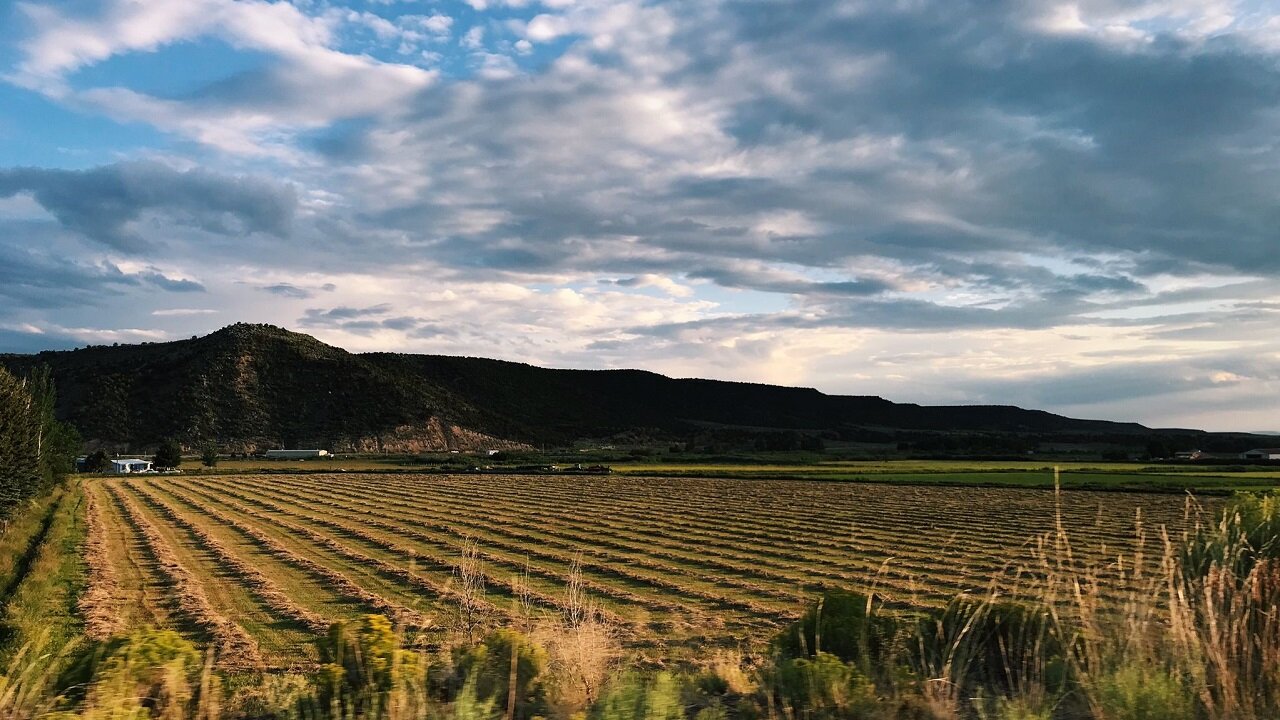
What’s next?
Judge Plotz is currently creating a set of rules for how to utilize grazing and tree resources on the mountain, guided by four decades of opinions from the district court, the Court of Appeals, and the Colorado Supreme Court.
“I’m sure Judge Plotz is thinking, ‘This is not what I hoped for,’” Wallace said of the number of decisions Plotz will make. “It’s not easy. Presumably, he may pick and choose between both lists.”
While there is no sense of timing, Wallace said she hopes the court’s decision comes soon. “When people start going back up to the mountain, it would be great to have some sense of clarity for them,” she said.
When the rules are released, “Education will be super important,” Wallace noted, including for the next generation of access rights holders.
Valencia agreed. “The biggest thing is education. In the community of San Luis, not everyone has internet or cell phone service,” he said. “That is one of the challenges that we, and the Land Rights Council, faces, moving forward — just getting the information into the hands of the people who need it most. It all comes down to communication.”
All agreed — a shared integrity is essential moving forward.
“I think Plotz … is really trying to guide the parties to take this dispute and try to move it to a place where there is more peace and harmony, and everybody's living together and protecting the mountain — La Sierra — above all else,” Cotter said.
“I think that the access holders and the ranch can co-exist in peace,” Wallace said. “I absolutely do. But it needs to come with an understanding.”
“To be involved at this point to me is the greatest honor,” Cotter said of her time representing Cielo Vista Ranch. “If we can get to a point of true compromise and a shared history and a sort of new day — I just can't think of anything better.”
“Both sides love and respect the land,” Valencia acknowledged. “They are both interested in what is best for La Sierra. Hopefully, they come together and rally around that piece and realize that these rules are really meant to protect the land and ensure that it is there for future generations.”
“Everybody has the same interest, at the end of the day,” said Cotter.
Kate Perdoni is a multimedia journalist for Rocky Mountain PBS and can be reached at kateperdoni@rmpbs.org.
Related Stories
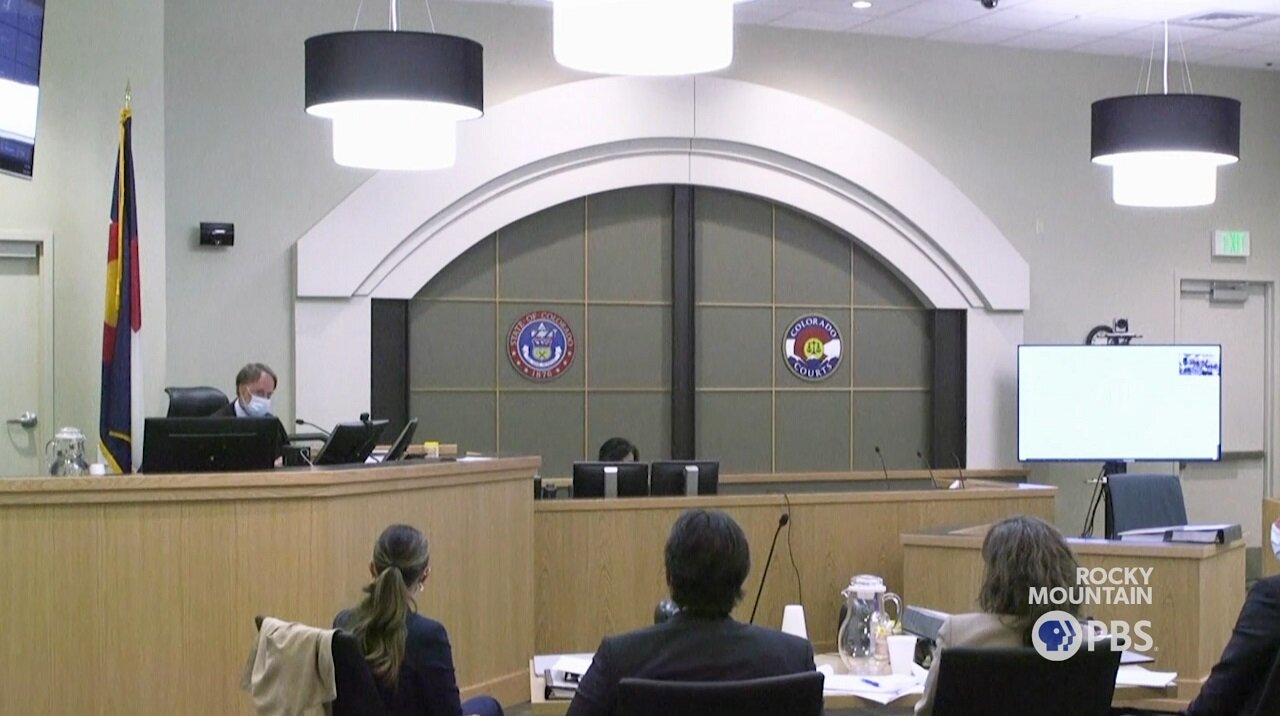
The upcoming rules of the ranch
The judge asked both sides to address issues raised in the hearing, including “time and location restrictions, the number of livestock, camping with regard to shepherds, scouting, and so forth.”
Counsel for the ranch and the greater community of San Luis came to agreement on several points, including:
- Use Forms must be filled out by access rights holders and submitted to the Ranch in order to access the ranch;
- The ranch can require locked gates at all common access points, to be utilized by a universal key;
- Access rights holders can choose to exercise their rights collectively;
- Access rights holders may not hunt or fish;
- Access rights holders must harvest and collect firewood and timber during daylight hours — one hour prior to and one hour after sunset;
- Access rights holders cannot gather firewood and sell it;
- There shall be no time limitations on access rights holders’ right to tend to livestock, nor restrictions on how frequently or in what matter rights holders can check on livestock; and camping is permitted regarding sheep;
- Access rights holders cannot take antler sheds from the ranch;
- Active hunt status on the ranch cannot constitute closure of the ranch for access rights holders;
- Roads can be maintained by access rights holders following protocol of notice and coordination with the ranch;
- There will be no interaction between employees of the ranch and rights holders unless the rights holder appears to be on the ranch for an improper use, does not have a Use Form on file, or if a ranch employee is approached by an access rights holder.
- If evidence of wrongdoing exists, ranch employees may approach rights holders.
Both sides also filed separate proposals. Issues the Judge will have to decide on behalf of rights holders and the ranch include and are not limited to:
- Who is allowed to accompany the access rights holder to the ranch;
- How drones can be used on the ranch;
- The nuance of what it means to scout for wood;
- What constitutes an emergency in case the ranch needs to close;
- Weight limits on vehicles coming into the ranch;
- Adequate notice before material improvements or changes to the landscape like fence building, subdivision, commercial operations, et al.;
- Types of trees to be harvested or avoided;
- How far away from existing and future structures rights activities can take place;
- How many livestock can be grazed and of what variety;
- How grazing efforts will be coordinated with the ranch;
- Rules for firearms;
- Whether a misuse of the easement could constitute a forfeiture of rights;
- How to approach counsel and the courts in the case of violations or abuses of rights.
Some of these items may require the Judge to explore the limits of “safeguarding rights.” For example, the ranch owner has buffalo and that has come up in this case, Wallace said.
“There could come a time where, if the buffalo start to impede on the landowner’s ability to have their animals graze, the livestock may have precedence over the buffalo,” she said.
Thus, access rights holders’ rules rebut that buffalo can be held if they do not infringe on an access rights holders’ ability to graze.
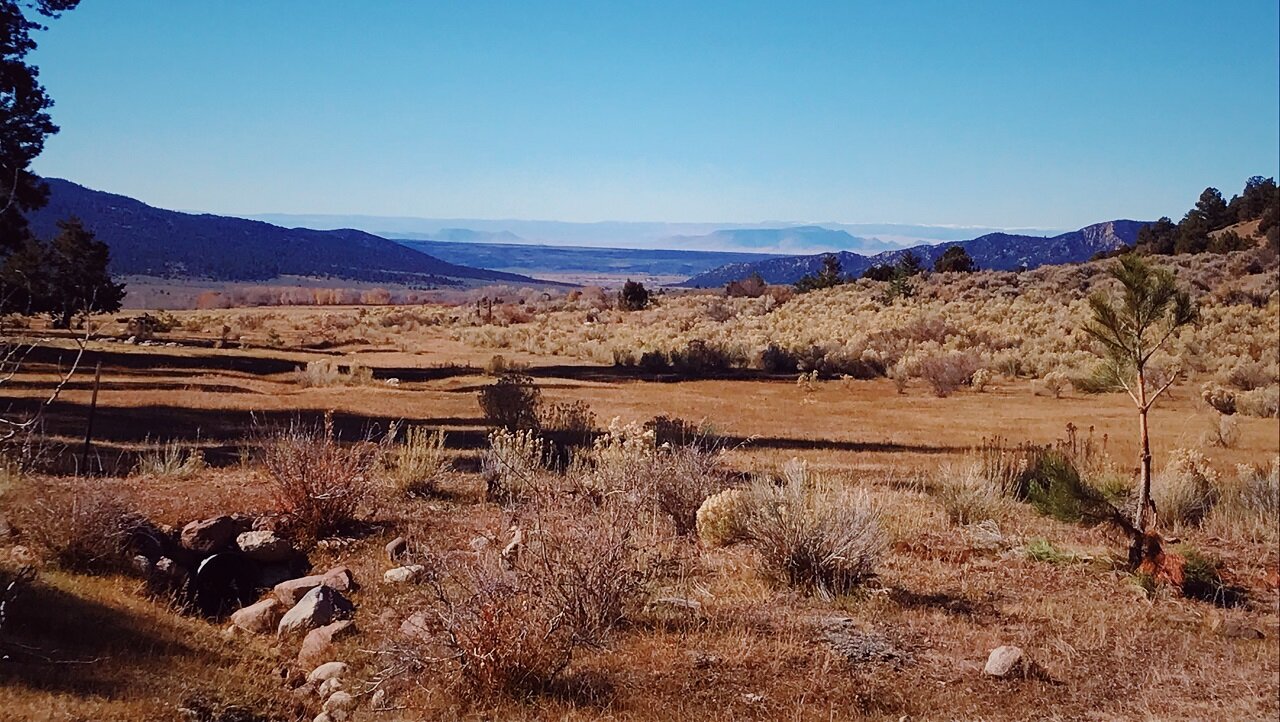
“The positive thing that's come out of this is our ability to have those conversations,” Cotter said. “It was wonderful when we would get on the phone and talk about a specific regulation. And I'd say, ‘Sarah, this is where my client’s coming from. And this is this concern.’ She would say, ‘I totally get that. Here's where my client's coming from. Here's their concern.’”
After “an intense period of time of negotiation,” Wallace said the two teams “got as far as we could.” Though “the goal would be to have something that works for generations to come,” Wallace said, “I would be shocked if we came up with the perfect set of regulations.”
The Judge’s decision, she said, will likely take some refining.
“We hope through our proposed rules and regulations, that both parties come up with a plan to live together,” Valencia said. “If they can come to agreement, it would be better for everyone.”
Plaintiff’s attorneys say cultural divide is at heart of case
“It would be difficult to overstate the influence of Mexican law, farming practices, and culture on the nature of the present dispute,” the plaintiff’s brief reads. It also urges the judge to “be guided by this influence of Mexican culture on the Access Rights’ Holders use of La Sierra” when coming to a decision.
“I realized pretty early on in talking to folks … that a big part of the problem is there is a just a total cultural disconnect,” Wallace said.
She gave the example of efficiency. “I think the [ranch owner] thinks it’s reasonable to ask of folks to get firewood in the most efficient, quick way possible, and get off the land,” Wallace said. “That is a cultural viewpoint of efficiency, and best use of time, and least use of mountain resources.”
Wallace said the disconnect is that locals historically regard collection of firewood as a day’s outing, and a family affair. “It’s an activity to be enjoyed and cherished among generations,” she said. “It’s not to go in and go out as quickly and efficiently as possible.”
“Talking to these landowners, they exercised these rights with their children. And when they were children, they exercised their rights with their parents,” said Valencia.
“That kind of cultural disconnect permeated every single dispute,” Wallace observed. “It’s like trying to impose a modern-day, fast-moving world on people who — that is not how they have operated in the past. It’s not how they want to operate. It’s about a process for them — they want to go up and enjoy the process.”
“How the community members look at their rights, and historically how they’ve used them, is a little bit different than how the ranch owner views his property rights,” Valencia said. “It’s a modern versus historical approach, to some extent.”
Valencia said familiarizing himself with the case required reading opinions of the courts, as well as traveling to San Luis, meeting and talking to community members, touring the land, and learning how it supports the community.
“Like a lot of rural communities, everyone is incredibly hard working, and dependent on the land,” Valencia observed. “It’s a hard lifestyle. People are dedicated to their trade.”
“I think what’s the most surprising to me about San Luis is not what you see physically, but the lifestyle that the folks are living there,” Wallace said, noting many residents heat their homes with firewood, and ranch and farm into their elderly years.
“It sometimes feels like people are from a different era,” Wallace said. “It’s so not about money. I have never experienced a community so unmotivated by economics. They are motivated by maintaining their culture.”
It’s also a very passionate community, Valencia said. “Explaining to them that, maybe how they feel passionately about something is different than how the law looks at it — if I had to identify a challenge, that would probably be one of the bigger ones.”
To date, each individual key holder has mostly overseen the extent of their own rights.
“How both sides look at their rights, versus what the law and their rights are — sometimes can differ,” Valencia said. “We’re trying to reach a place where both parties understand exactly the rights that they do have, and how to exercise them.”
Defense urges common goal of stewardship and care taking mountain
The goal for co-stewardship of the mountain remains, urged Cielo Vista Ranch attorney Cotter.
She said regulations and consequences will put everyone on the same page — and that parties may already be closer than they realize.
“Are there cultural differences? Sure,” Cotter said. But “a motivation in respect for the land, and a history in families being rooted in a specific place with a sense of place defining who you are — both sides have that in common.”
She said ranch owner William Harrison’s background and intention are often overlooked or misinterpreted.
“For generations and generations, William’s family has lived in Texas. They are ranchers. They care about the land,” Cotter said. “Their livelihood early on was always dependent upon and made by the land.”
Cotter said the narrative surrounding Harrison has been disappointingly stereotypical.
“What comes out is, you know, ‘Billionaire, Texas land man buys fourteener.’ That’s how he's referred to,’ Cotter said. “And, factually, that's true. But you reinforce that stereotype long enough, and I think there is a danger — that you can forget that this is a person who cares about land.”
It’s why he purchased the 84,000-acre ranch, said Cotter. “Why buy this property, with these legal issues? You buy it because you care about the land,” she said.
How to prevent abuse — and who is responsible for enforcing rules — is at the core of the discussion.
“There are people who use the ranch who have no tolerance for misuse and abuse and are very vocal about it,” Cotter said. “By far the majority of the people who use the ranch don't want abuse. It's the gray area in the middle that I think has been created by the ambiguity with the court.”
The financial implications of safeguarding rights on behalf of the community have historically fallen back on the ranch owner, Cotter confirmed in an interview with Rocky Mountain PBS, including legal fees and the hiring of staff. The peripheral costs of facilitating access holders’ rights are not discussed in the filings.
“From my perspective, it's seen as just assumed,” Cotter said. “Part of the reason that there's no acknowledgement of that is part of the sort of dehumanizing narrative established about [Harrison] and the prior owners of the ranch.”
“I think there's a lot of misunderstanding,” Cotter said. “I think, on both sides, sort of assumptions have been made, and there has been a lack of connecting with the common goal.”
The process of creating rules
How proposed rules were drafted was revealed in conversations with both sides’ attorneys.
Wallace organized and managed the process of the plaintiff’s proposal. She said she knew leaving the courtroom that the time allowed by the judge would go by quickly.
Plaintiff’s attorneys first visited San Luis to educate the community about the judge’s ruling. “Immediately, my goal was to engage as many people as possible, and not have it just be a handful of folks,” Wallace said. “There are lots of people who have these rights, and I wanted all of them to have the opportunity to be heard.” She noted not all rights holders are listed as plaintiffs or were able or wanted to attend the hearing.
In a crowd of 100, about 30 rights holders publicly spoke toward rules they wanted to see between parties, Wallace said. Sub-committees were formed to address specific aspects. Each drafted proposed rules.
“Are they perfect? No,” said Wallace. “Did we make every endeavor to include as many people as possible? Yes.”
“I was really happy with how the community came together,” said Valencia, who was involved with the sub-committees. “All the different ideas, personalities, and backgrounds — when you get those all to come together to complete a project like this, I think it is something special and unique.”
With potentially hundreds of people who exercise rights on the ranch, “I understand their challenge,” said defense attorney Cotter. “They don't have just one person with one interest that they're trying to protect. I don't envy Ms. Wallace.”
Wallace said the two legal teams were "trying to come to agreements up until the day the filings happened. I definitely feel like both sides put in their all to try to come to some accommodations.”
Why did it take 20 years to create rules?
In 2002, the Colorado Supreme Court directed “to identify all landowners who have access rights to the Taylor Ranch, and to enter all necessary and appropriate orders to safeguard those rights.”
- The Court said Who and Where: Heirs to lands originally settled under the Sangre de Cristo Land Grant, exercising resource rights in the mountains east of San Luis.
- They said When and What: Year-round access to graze livestock and collect firewood and timber on a now-private mountain tract.
- They said Why: Primarily, the Beaubien document.
But the Supreme Court didn’t say how.
“The court’s job isn’t to be proactive, and stop some future harm that hasn’t yet occurred,” explained Valencia. “Their job is to address some concrete injury that has already occurred.”
Thus, attorneys found themselves on a new side of history in September when asked to confer over the “how” of access rights.
In a 2018 letter to the community, Harrison expressed he wanted to seed and irrigate common grazing lands and upgrade amenities on Cielo Vista Ranch — but that there needed to be a collective understanding of responsibility in place among the community to maintain his investments. With some coordination, he urged, rights could even help augment critical fire mitigation strategy.
He understood previous frictions between the ranch and community, Harrison wrote, and implored locals to work together to co-create a plan. Both Harrison and rights holders publicly relayed interest in forging a new relationship.
“There were certainly settlement discussions,” Cotter said. “There’s some Facebook posts recognizing that this was the first time that the ranch owner had broken bread with the individuals who have access to the ranch,” she recalled. “Everyone was really hopeful about that process. But ultimately it did not result in any sort of global settlement.”
Attempts at communication fell apart. In 2018, not long after purchasing the ranch, Harrison filed an appeal against the 2002 Supreme Court decision, citing improper grazing by rights holders and other material and legal issues including poaching, trash dumped or buried, unauthorized people visiting the ranch, third party sale of firewood or timber, cutting and downing miles of fencing, and digging live trees for resale. His appeal was ultimately denied. Meanwhile, Harrison attempted to buy out some rights holders via a letter. The court intercepted until due process could be established regarding lines of communication between parties. In some cases, outside settlements were reached, though parties could not comment.
The ranch developed a camera surveillance system and used drones to help determine the source of abuses and to prevent them, leading to an atmosphere of being surveilled for some attempting to exercise their rights. Verbal and material conflicts resulted in hostility — eventually landing parties back in court.
In his September findings, Judge Plotz compared some of the mechanisms of enforcement to policing, stating the impact was that the community was regarded as “second-class citizens.” He said the encounters were “demeaning” and concerned him.
The judge noted establishing proper use would be for the health of all involved.
Cotter said the ranch has been asking for a process to create rules for years. “We wanted that,” she said, “and the court just was not willing to force that. And so that's why, when Judge Plotz made the ruling that he made, we were thrilled. From our perspective, this is what we have wanted for 18 years.”
